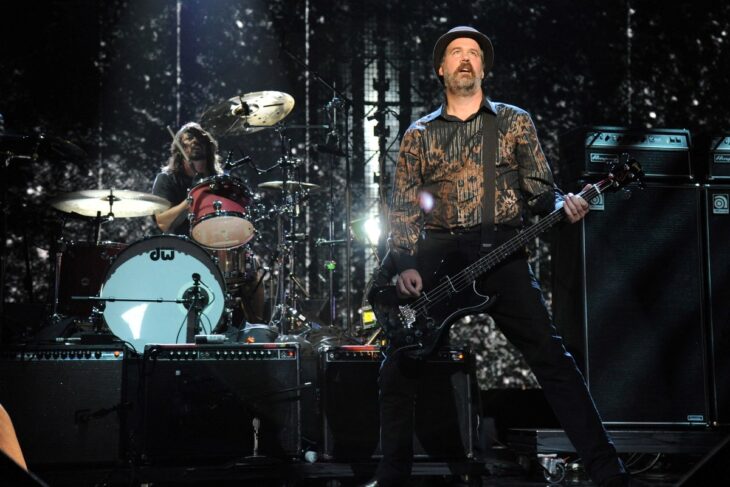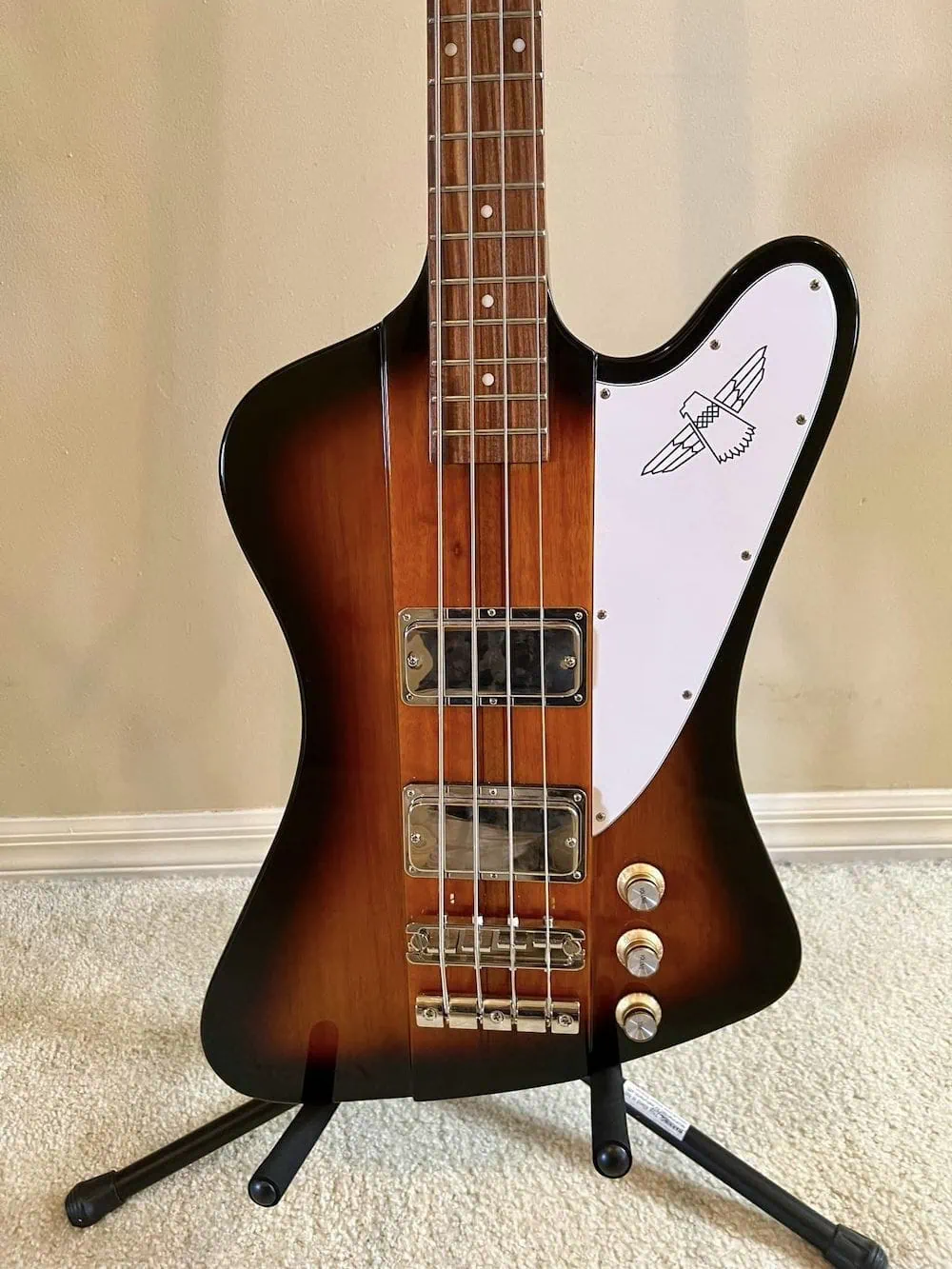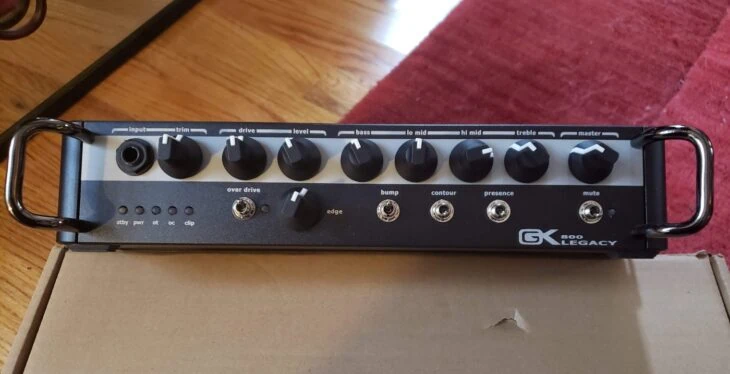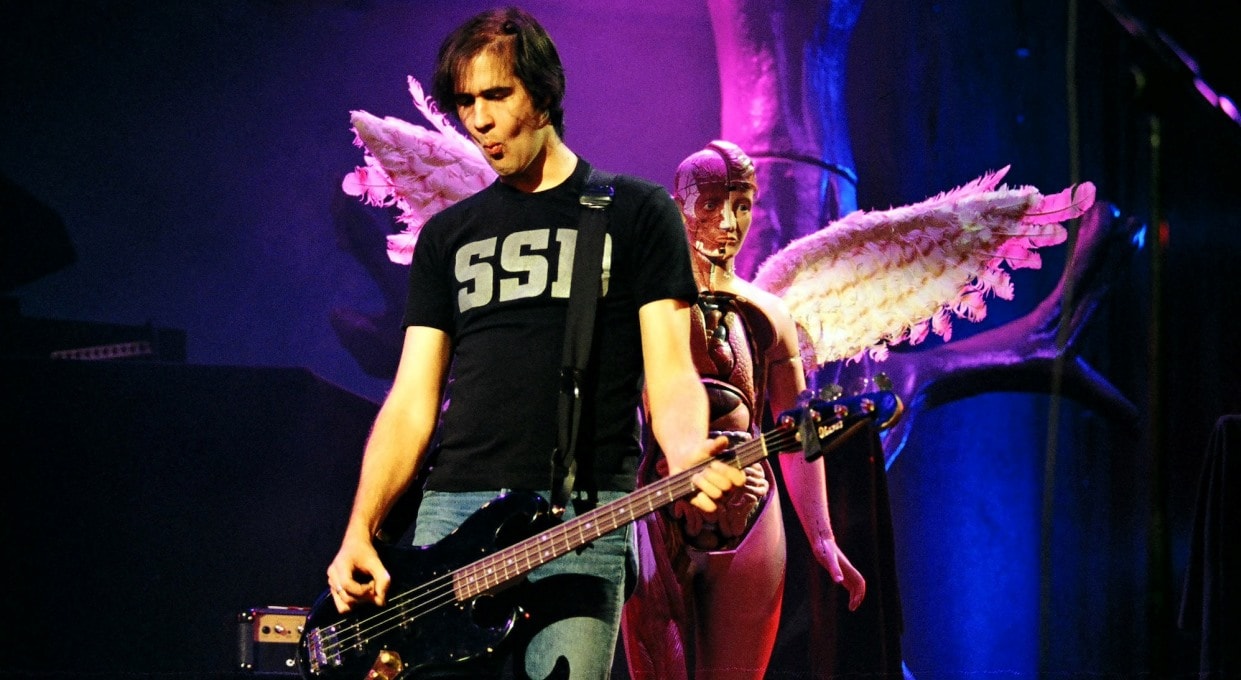One of the great unsung heroes of the grunge era, Nirvana’s bass player Krist Novoselic provided the sturdy, powerful glue for the band’s generation-defining anthems of Generation X angst.
Novoselic founded Nirvana with his boyhood friend Kurt Cobain, and the band rose from the punk clubs of Seattle to major international success thanks to the addition of drummer extraordinaire Dave Grohl and the release of their seminal sophomore album Nevermind.
Although Cobain and Grohl are rightly celebrated as major influences on virtually all rock music written and released since 1992, I’ve long felt that Novoselic’s solid, melodic bass playing flew under the radar for most music fans. He clearly draws from the well of two of my favorite hard-rock bass players, namely Gene Simmons and Geezer Butler, while adding an uncompromising punk-rock edge.
For any bass players who want to add some grit and power to their rig, Novoselic’s tones circa Nevermind and In Utero are excellent starting places. In this article, I’ll run through the key pieces of gear you need to get in the ballpark of the definitive Nirvana bass sound.
Table of Contents
Nirvana Bass Guitars

Nirvana’s habit of smashing their instruments at the end of a set means that a definitive guide to Novoselic’s choice of basses is hard to come by.
Furthermore, he often used cheap secondhand instruments for music videos and live performances, often owning a bass for an hour or two before smashing it to bits at the end of a show.
However, there are a few key features of Novoselic’s tone that I’ve used to pin down some guidelines.
First of all, to balance out Cobain’s Fender guitar sound, Novoselic leaned towards the growl and punch of a Gibson bass. Although he was known to borrow Fender-style basses upon occasion, most of his tone comes from a humbucker-equipped Gibson bass guitar.
Novoselic variously played Thunderbirds, RDs, Rippers, and EBs through Nirvana’s commercial peak.
The SG Bass is the closest modern equivalent to the EB-3, or if you want to go all-out you can use the Gene Simmons EB-0, following in the footsteps of one of Novoselic’s bass heroes.

Most of us, however, are looking at more affordable bass guitars than top-of-the-line signature models. Fortunately, Epiphone has plenty of bass guitars on offer, including an EB-3 and a Thunderbird.

Any of these basses would go a long way to capturing the thick, powerful Krist Novoselic tone from Nirvana’s golden era.
Krist Novoselic Amps

To record Nevermind, Krist Novoselic used an Ampeg SVT 400T. He eventually replaced this with a heavily modified 100-watt Hiwatt DR103 amplifier that, by the time Krist was done with it, barely sounded like a Hiwatt amp at all.
The amp was modded for KT-90 tubes (rather than the stock EL34 tubes). For this reason, I’d avoid getting a Hiwatt amp: Krist’s Hiwatt wasn’t really a Hiwatt-style amplifier.
Around the In Utero tour, Krist switched to clean, transparent Gallien-Krueger amplification, favoring the 800RB.
This high-end gear was readily available for Krist, then in the biggest rock band on the planet, but isn’t quite as accessible for most working musicians.
Fortunately, the Ampeg Micro SVT is an excellent amplifier for the Nevermind studio tone.
If you’re leaning more towards Krist’s live sound (such as that heard on From the Muddy Banks of the Wishkah), the Gallien-Krueger Legacy 800 is probably your best bet for modern amps.

Nirvana Bass Amp Settings
Krist Novoselic preferred a thick, powerful bass sound, rumbling away in the background beneath the harsher, more aggressive tone of Kurt Cobain’s guitar.
The settings below are designed to help get you in the zone for this sound. I’ve based the below settings on Novoselic’s Nevermind sound.
Master/Volume: 8
Nirvana was a notoriously loud live band. Keeping up with Dave Grohl’s thunderous drumming demanded that Krist plays at tremendous volume.
Gain: 3-4
Krist’s bass sound is not overly distorted or overdriven. I would recommend avoiding too much amp distortion. Instead, use a pedal to drive your amp when necessary, as described in the next section.
Bass: 8
This is a warm, thick tone, so you’ll want to emphasize a lot of the low-end frequencies already present in your Gibson-style bass.
Mids: 3-4
This slightly scooped tone isn’t particularly mid-forward, leaving most of the midrange to Kurt’s guitar.
Treble: 7
This is not a particularly bright sound, but you’ll need a balancing amount of treble to balance out the natural warmth of this tone.
Nirvana Bass Pedals
Krist Novoselic largely eschewed using pedals live or in the studio. It’s remarkable how consistent his tone managed to be despite his avoidance of most standard bass pedals like compression. True to his DIY punk-rock roots, Novoselic’s rig was uncomplicated, without much by way of additional effects.
However, over the course of his time with Nirvana, Novoselic did employ distorted tones, and with his high-fidelity taste in bass amplification, he relied on a few simple dirt boxes to get his distorted tone when necessary.
Around Nevermind, Novoselic took to the ProCo Rat as his primarily distorted tone. You can hear this particularly prominently on “In Bloom,” although it is present frequently throughout that album.

Novoselic occasionally deployed the Boss DS-1 live. The DS-1 he was using was actually an old pedal of Kurt Cobain’s, but Novoselic switched back to the Rat for later tours, so I would hesitate to label this a key part of Novoselic’s tonal palette.
Final Word
Krist Novoselic’s bass rig is uncomplicated and easy to emulate with the right gear. The most important feature is a heavy, powerful-sounding Gibson-style bass guitar. However, it’s important to note that Novoselic often used cheaper secondhand basses live, and always sounded like himself while playing.
Make sure to use a pick and play with a consistent attack while you’re powering through your favorite Nirvana songs, and scoop the EQ on your amp to leave plenty of midrange for your band’s guitarist. From there, it’s a simple matter of finding a drummer capable of hitting like Dave Grohl and you’ll have the Nirvana sound of post-grunge dreams.

